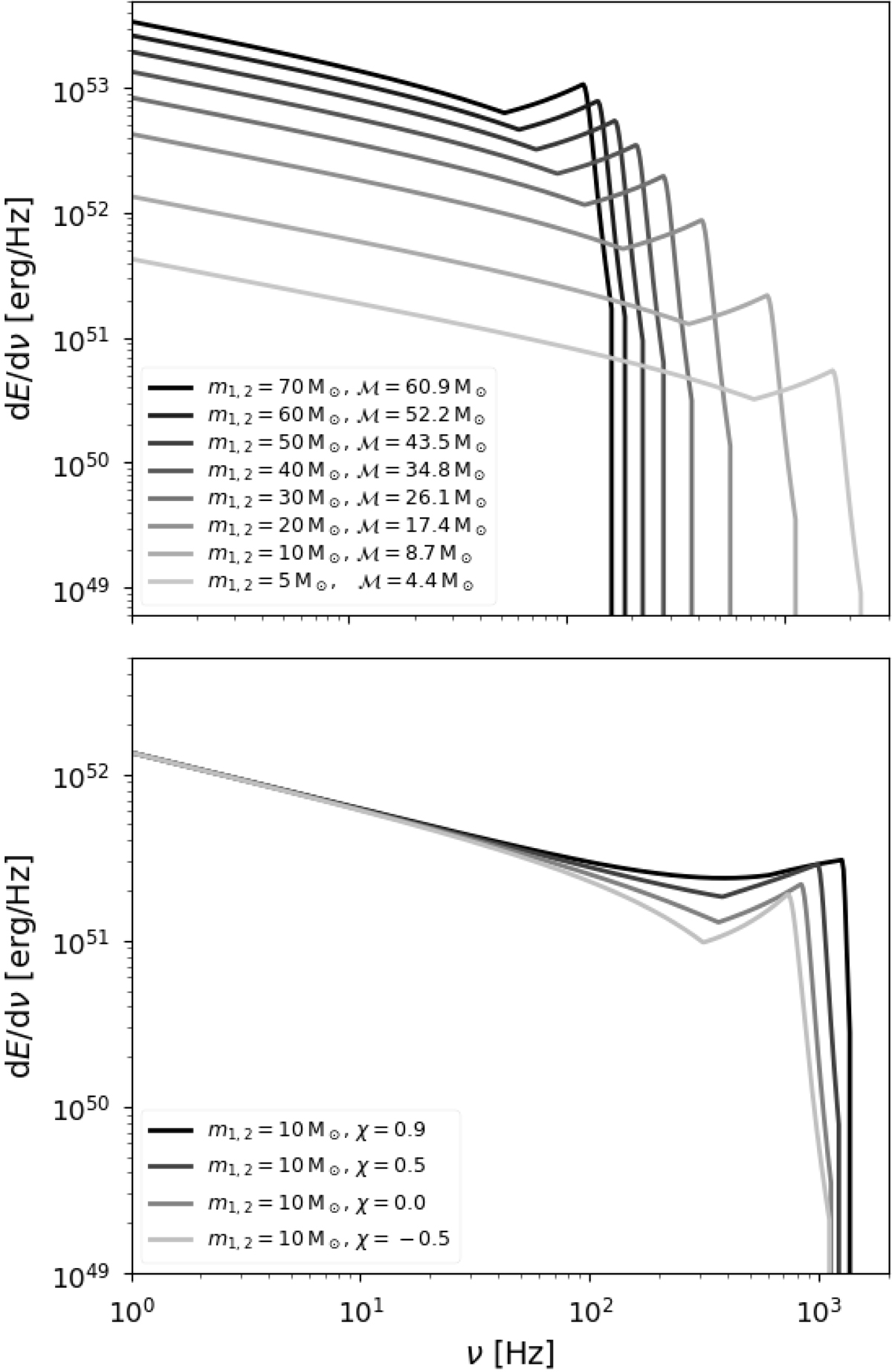Fig. 2.

Download original image
Gravitational-wave energy spectrum, dE/dν, as a function of frequency. Top: energy spectrum for different non-spinning equal mass BBHs according to the legend. The more massive the BBH systems, the more energetic the GW signals and the smaller the merger frequencies. More precisely, the GW energy spectrum scales as dE/dν ∝ ν−1/3ℳ5/3 for ν < νmerger and dE/dν ∝ ν2/3ℳ5/3 for ν < νringdown (cf. Eq. (B.1)), while νmerger ∝ M−1 where M = m1 + m2 is the total mass (cf. Eq. (B.4)). Bottom: energy spectrum for a BBH system composed of two BHs of mass 10 M⊙ and different effective spins according to the legend. Larger χ values lead to more energetic GW signals as dE/dν ∝ ν−1/3(1 + 𝒪χ)) for ν < νmerger and dE/dν ∝ ν2/3(1 + 𝒪χ)) for ν < νringdown (cf. Eq. (B.1)).
Current usage metrics show cumulative count of Article Views (full-text article views including HTML views, PDF and ePub downloads, according to the available data) and Abstracts Views on Vision4Press platform.
Data correspond to usage on the plateform after 2015. The current usage metrics is available 48-96 hours after online publication and is updated daily on week days.
Initial download of the metrics may take a while.


